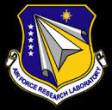AFRL posts BAA for AIR program
 On February 26, the Air Force Research Laboratory posted a broad agency announcement for Applications for Information Reporting (AIR) (BAA NUMBER: BAA RIK-2015-0002).
On February 26, the Air Force Research Laboratory posted a broad agency announcement for Applications for Information Reporting (AIR) (BAA NUMBER: BAA RIK-2015-0002).
The Air Force Research Laboratory’s Information Handling Branch (AFRL/RIEB) is soliciting white papers under this Broad Agency Announcement (BAA) for research, development, integration, test and evaluation of technologies/techniques to advance current intelligence and situation awareness applications specifically focused on mission reporting and analysis.
The focus of this BAA directly supports the AFRL/RIEB mission to research, develop, and demonstrate advanced information technology solutions to support timely and secure intelligence information access, analysis, and dissemination for National Defense and Intelligence Community decision makers at all echelons, which enables the continuous assessment of global conditions and events; establishes and maintains critical battlespace situational awareness (including an understanding of adversarial capabilities and intent); provides game-changing intelligence; and locates, identifies, and tracks red, blue, and gray forces anywhere, anytime in near real-time.
The purpose of these capabilities is to provide the right information to the right person at the right time. This enables a decision system that creates and exploits knowledge across the full range of military operations in real-time and faster than any adversary can react. These capabilities must provide a framework to better understand the state and non-state actor intent, capabilities, and enable desired effects across permissive, contested, and highly-contested operating environments (anti-access area denial (A2AD)). Further, these capabilities must be seamlessly integrated across operational domains to maximize joint force battlespace awareness, quickly authenticate and fuse data, and rapidly disseminate the information with joint services, other United States Government agencies, and allies.
BACKGROUND:
Consistent with Air Force Intelligence, Surveillance, and Reconnaissance (ISR) 2023 tenets, this vision supports and integrates the analyst, warfighter and decision maker. This shared vision depicts an enterprise that seamlessly ingests data from an even wider array of sources, swiftly conducts multi- and all- source analysis, and rapidly delivers decision advantage to warfighters and decision makers. A paradigm shift is critical to transform the focus from gathering to analysis, from data to decisions, from stove-pipe to network.
Multi-Source Analysis applications are primed to provide game-changing capabilities for a multitude of scenarios to include the fight on anti-access, area denial (A2AD), activity-based intelligence (ABI), intelligence preparation of the operational environment (IPOE), non-traditional intelligence, surveillance, and reconnaissance (NTISR), and denial and deception.
A2AD is becoming an emerging challenge problem as adversaries raise numerous barriers to the United States and allied forces for access into political, economic, and military operations. As a result, this BAA is focused on developing intelligent applications that provide capabilities for achieving situation awareness over considerable strategic and operational distances. A2AD environments will severely limit the use of traditional intelligence, surveillance, and reconnaissance assets. Therefore, this research will concentrate on leveraging a variety of data sources (traditional and non-traditional) to achieve global situation awareness across permissive, contested, and highly-contested environments.
ABI is an emerging intelligence technique that focuses on collecting data on activities, transactions, and events over long periods of time and large areas to derive patterns of life. ABI includes the collection, processing, analysis, and storing of multiple intelligence sources to mine for relationships and activities that were previously unknown or unrecognizable. ABI applications will allow analysts to fuse and correlate related data for improved operational awareness. These applications will allow for quick cueing and tipping of ISR assets. ABI applications need to efficiently manage the volume, velocity, and variety of the data while providing innovative analytic capabilities to derive novel patterns of life.
IPOE, as defined by the Joint Intelligence Preparation of the Operational Environment doctrine, are the analytical methodologies to reduce uncertainties concerning the enemy, environment, time, and terrain. IPOE produces intelligence products that directly support the commander’s decision-making process to include defining the operational environment, describing the impact of the operational environment, evaluating the adversary, and determining adversary courses of action. This includes and is not limited to analyzing relevant political, military, economic, social, information and infrastructure variables that describe the impact of the operational environment on mission accomplishment. IPOE is critical to achieving and maintaining information superiority by identifying adversary centers of gravity, focusing intelligence collection, exploitation, and analysis at the right time and place, and analyzing the impact of the operational environment on military operations. The focus of this challenge problem will center on developing multiple intelligence (Multi-INT) applications that can assist with the IPOE process.
NTISR is the planning and use of sensor systems and platforms that while not intended for a particular purpose, can contribute vital information to the development of battlespace awareness and increase the ability to conduct decisive operations. NTISR seeks to address the growing concern of the very high demand of intelligence, surveillance, and reconnaissance platforms that insufficient numbers of these platforms are negatively affecting every facet of the battlefield and ultimately inhibiting operations. Intelligent applications are needed to assist with the planning, execution, collection, and analysis of intelligence, surveillance, and reconnaissance missions and data to allow for smart operations. The end goal is to provide a more efficient and effective ISR capability that collects the necessary data to make informed decisions.
Full information is available here.
Source: FedBizOpps








